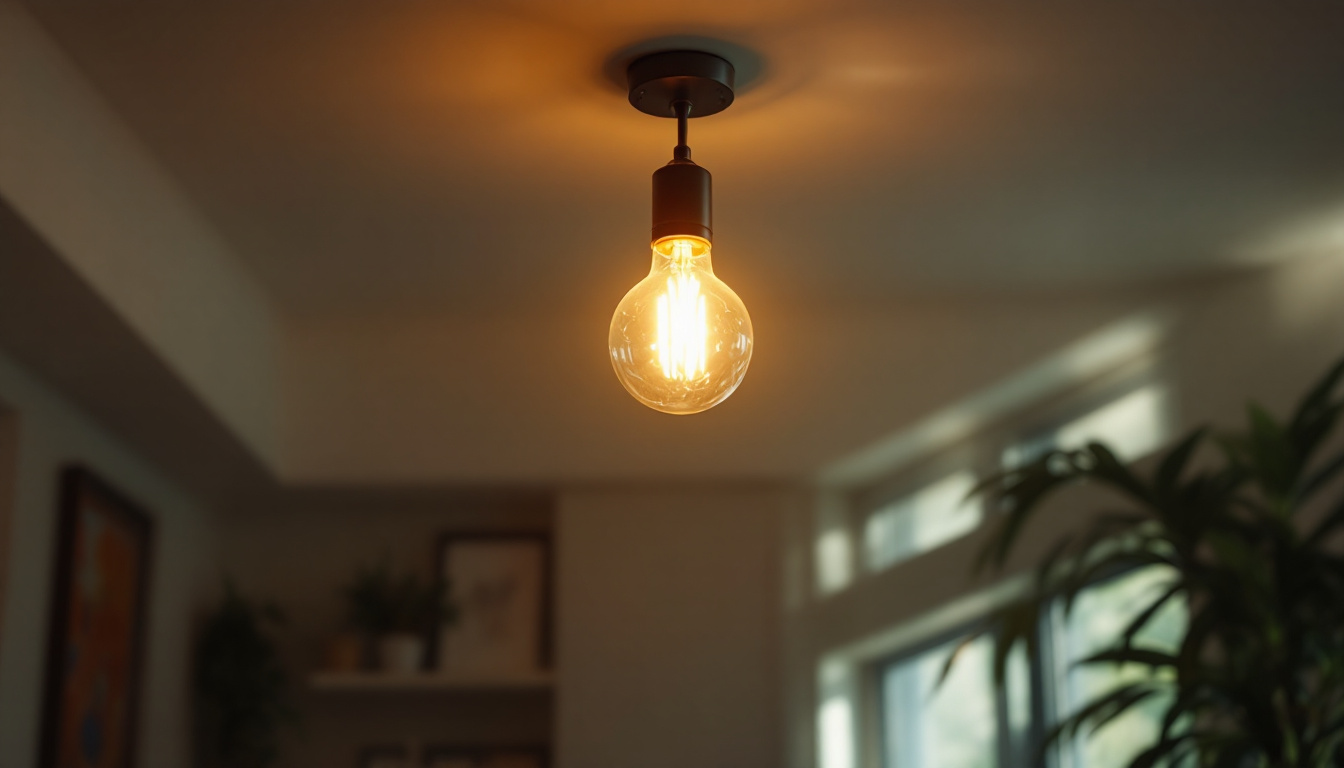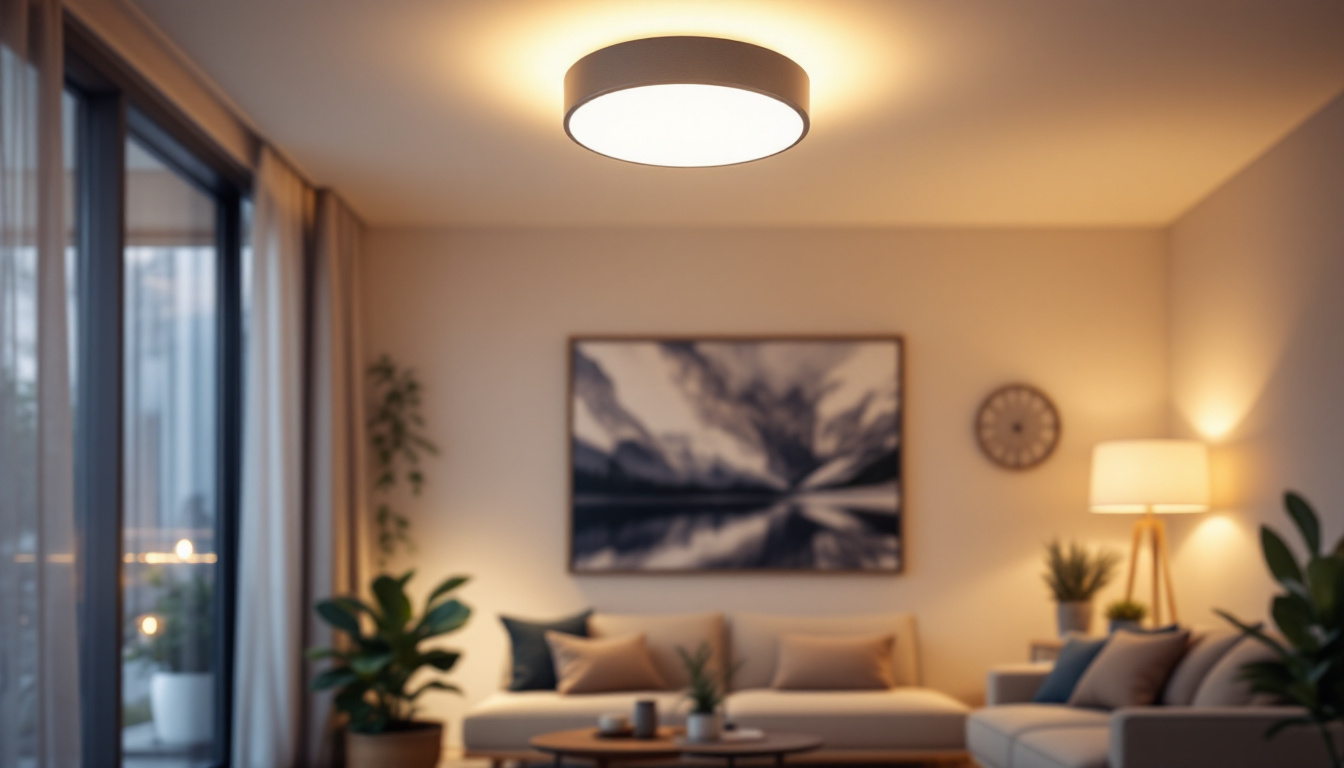

Choosing the right ceiling lights is crucial for any lighting contractor. The appropriate selection not only enhances the aesthetic appeal of a space but also ensures functionality and energy efficiency. With a plethora of options available in the market, it can be daunting to make the right choice. This guide aims to assist lighting contractors in navigating through the various types of ceiling lights, their applications, and the factors to consider when making a selection.
Ceiling lights serve as a primary source of illumination in residential and commercial spaces. They come in various styles, designs, and functionalities, making them suitable for different environments. Understanding the types of ceiling lights available is essential for contractors to recommend the best options to their clients.
There are several types of ceiling lights, each designed for specific purposes and settings. The most common types include flush mounts, semi-flush mounts, chandeliers, and recessed lighting.
flush mount lights are installed directly against the ceiling, making them ideal for rooms with low ceilings. Semi-flush mount lights hang slightly below the ceiling, providing a more decorative element while still being functional. Chandeliers, often associated with elegance, can serve as statement pieces in dining rooms or entryways. Recessed lighting, on the other hand, is embedded into the ceiling, offering a sleek and modern look.
In addition to these popular types, there are also pendant lights, which hang from the ceiling and can be used individually or in clusters to create a unique lighting arrangement. Pendant lights are particularly effective over kitchen islands or dining tables, where they can provide focused light while also enhancing the overall decor. Another emerging trend is the use of smart ceiling lights, which can be controlled via smartphone apps or voice commands, allowing users to adjust brightness and color temperature to suit their preferences and activities.
Ceiling lights are versatile and can be used in various settings. In residential spaces, they illuminate living rooms, kitchens, and bedrooms, creating a warm and inviting atmosphere. In commercial environments, ceiling lights are essential for ensuring adequate lighting in offices, retail spaces, and restaurants.
Moreover, the choice of ceiling light can influence the mood and functionality of a space. For instance, brighter lights may be preferred in workspaces for better visibility, while softer lighting may be more suitable for relaxation areas. Additionally, the color temperature of the lights can play a significant role; warmer tones can create a cozy ambiance, while cooler tones can promote alertness and focus. The strategic placement of ceiling lights can also enhance architectural features, drawing attention to high ceilings or decorative moldings, thereby elevating the overall aesthetic of the space.
When selecting ceiling lights, several factors must be taken into account to ensure the best outcome for clients. These include the size of the space, the purpose of the lighting, energy efficiency, and design aesthetics.
The size and layout of a room play a significant role in determining the type and number of ceiling lights required. For larger spaces, multiple fixtures may be necessary to achieve even illumination. In contrast, smaller rooms may only require a single light fixture.
Additionally, the layout of the room can influence the placement of ceiling lights. For example, in an open-concept living area, strategically placing lights can help define different zones within the space. Consider using a combination of pendant lights over dining areas and recessed lighting in the living area to create a cohesive yet distinct atmosphere. Furthermore, the height of the ceiling should also be taken into account; higher ceilings may benefit from fixtures that hang lower to draw the eye and create a more intimate setting, whereas lower ceilings might require flush mounts to avoid overwhelming the space.
Understanding the purpose of the lighting is crucial for making informed decisions. Different areas of a home or business may require varying levels of brightness and types of lighting. For instance, task lighting is essential in kitchens and workspaces, while ambient lighting is more appropriate for living areas.
Contractors should also consider whether the lighting needs to be adjustable. Dimmable lights can provide flexibility, allowing clients to change the ambiance based on their needs. Moreover, incorporating smart lighting systems can enhance user experience by enabling clients to control the intensity and color temperature of the lights through mobile apps or voice commands. This technology not only adds convenience but also allows for personalization, catering to the unique preferences of each client.
With the rising emphasis on sustainability, energy efficiency has become a significant consideration in lighting design. Contractors should recommend LED ceiling lights, which consume less energy and have a longer lifespan compared to traditional incandescent bulbs.
In addition to energy savings, many clients are also interested in the environmental impact of their lighting choices. Selecting fixtures made from sustainable materials can be an attractive feature for eco-conscious clients. Furthermore, integrating solar-powered lighting options for outdoor spaces can significantly reduce energy consumption and promote a greener lifestyle. By educating clients on the benefits of energy-efficient lighting, contractors can help them make choices that not only enhance their spaces but also contribute positively to the environment, aligning with the growing trend of sustainable living.
The design of ceiling lights can greatly influence the overall aesthetic of a space. Contractors should be familiar with various styles, from modern and minimalist to traditional and ornate, to cater to diverse client preferences.
When recommending ceiling lights, it is essential to consider the existing interior design elements. The light fixtures should complement the overall decor, enhancing the visual appeal of the space. For instance, a sleek, modern fixture may not suit a rustic-themed room.
Additionally, color and finish can play a significant role in the design aesthetic. Brushed nickel, matte black, and antique bronze are popular finishes that can either blend in or stand out, depending on the desired effect.
Staying updated with current trends in ceiling light design can help contractors provide valuable insights to their clients. Popular trends include the use of geometric shapes, mixed materials, and smart lighting technology.
Geometric light fixtures can add a contemporary touch to any room, while mixed materials, such as wood and metal, can create a unique and stylish look. Furthermore, smart lighting systems allow clients to control their ceiling lights through mobile apps or voice commands, adding convenience and modernity to their homes.
Proper installation is crucial for the performance and safety of ceiling lights. Contractors must be aware of the best practices and potential challenges that may arise during the installation process.
Understanding the electrical requirements for different types of ceiling lights is essential. Some fixtures may require additional wiring or specific voltage, which can affect the installation process. Contractors should ensure that the existing electrical system can support the new lighting fixtures.
Moreover, it is vital to follow local building codes and regulations when installing ceiling lights. This not only ensures safety but also helps avoid potential legal issues down the line.
The height at which ceiling lights are installed can significantly impact their effectiveness. For flush mount lights, the installation height is typically not an issue, but for semi-flush and pendant lights, contractors should consider the height of the ceiling and the furniture below.
Proper placement is also critical. Lights should be positioned to avoid casting shadows and to provide even illumination throughout the space. For larger rooms, placing lights in a grid pattern can help achieve balanced lighting.
Maintaining ceiling lights is essential for ensuring their longevity and performance. Contractors should educate clients on proper care and maintenance practices to keep their fixtures in optimal condition.
Regular cleaning is necessary to keep ceiling lights looking their best. Dust and grime can accumulate on fixtures, diminishing their brightness and aesthetic appeal. Contractors can recommend suitable cleaning products and techniques based on the materials used in the fixtures.
Additionally, clients should be informed about the importance of replacing burnt-out bulbs promptly to maintain consistent lighting levels.
Over time, clients may wish to upgrade or replace their ceiling lights to keep up with changing trends or to improve energy efficiency. Contractors should be prepared to offer recommendations on the best options available, considering the client’s budget and preferences.
Encouraging clients to invest in quality fixtures can also lead to fewer replacements and repairs in the long run, ultimately saving them money and enhancing their satisfaction.
Choosing the right ceiling lights is a multifaceted process that requires careful consideration of various factors. Lighting contractors play a crucial role in guiding clients through these choices, ensuring that they select fixtures that meet their needs and enhance their spaces.
By understanding the different types of ceiling lights, their applications, and the key considerations involved in the selection and installation process, contractors can provide valuable insights and recommendations. Ultimately, the goal is to create well-lit, aesthetically pleasing environments that cater to the specific needs of clients, ensuring their satisfaction and enhancing their overall experience.
Ready to elevate your lighting projects with the right ceiling lights? At LumenWholesale, we provide lighting contractors with an exceptional range of high-quality, specification-grade lighting options at the most competitive wholesale prices. Say goodbye to local distributor markups and hello to a vast selection of reliable, high-performance lighting that meets the highest industry standards. Plus, with the convenience of free shipping on bulk orders, you can ensure your projects shine without any hidden fees. Don’t compromise on quality or value—choose LumenWholesale for the perfect fusion of excellence and affordability. Discover our collection and take advantage of the best value in wholesale lighting by visiting Wholesale Lighting at the Best Value.

Discover the essential insights lighting contractors need to master flush mount light installations.

Discover why purchasing architectural grid mount lights in bulk from local distributors might not be the best choice.

Discover how vintage industrial hanging lights can revolutionize your projects by saving lighting contractors both time and money.

Discover why sourcing LED corn lights in bulk from local distributors might not be the best decision for your business.
Get notified when NEW deals are released.
Optimize your budget with wholesale discounts.
Only top-quality, specification-grade lighting products.
No additional costs at checkout - what you see is what you pay.
We understand the unique needs of contractors.